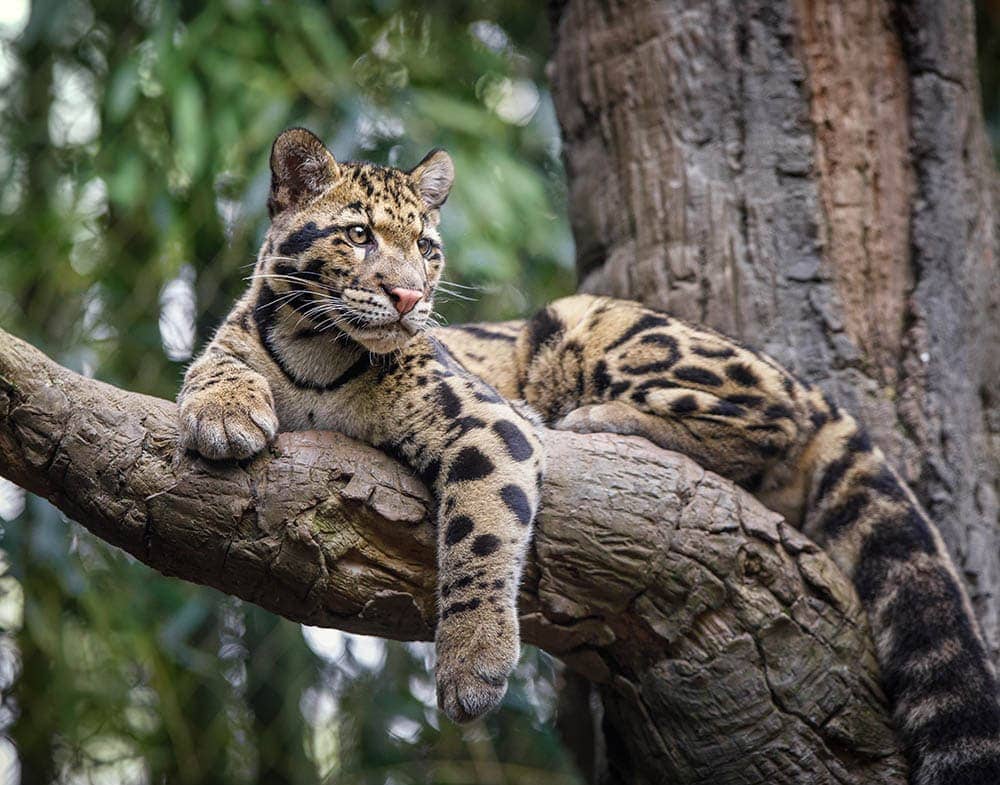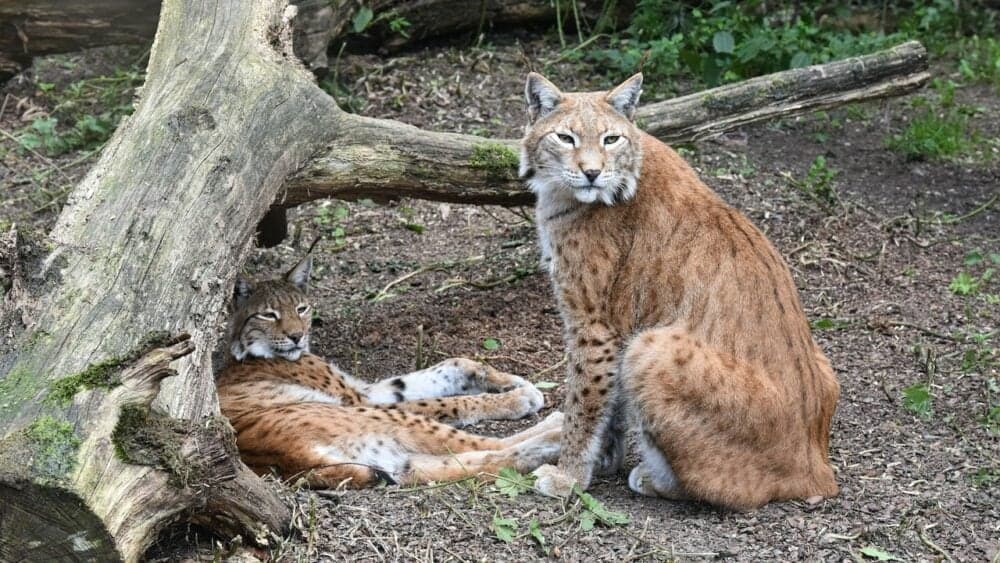If you are walking in the woods in Pennsylvania, you may encounter all sorts of wild animals. The state is home to animals like bears, foxes, rabbits, and deer. However, if you plan to see one or two wild cats, you may be disappointed. Contrary to reports of sightings, the only wild cats that make their home in Pennsylvania are bobcats and feral cats.

The 2 Types of Wild Cats in Pennsylvania
1. Bobcat

| Scientific name | ynx rufus |
| Average Lifespan | 10–12 years |
| Average size | 6 inches |
| Average Height | 12–24 inches |
| Weight | Male 21 lbs / Female 15 lbs |
Named for its stubby tail, the bobcat is a beautiful wild cat twice the size of an average domesticated cat. They have large paws on long legs. Their ears are tufted and pointed with black tips. The fur framing the neck and extending from the ears of the bobcat makes its head appear large and wide.
The coat can range in color but is typically tan to brownish gray. There are dark stripes on the legs and tail and spots on its body. The fur underneath the chin, lips, belly, and neck is whitish in color. Although this is the typical color of a bobcat, there have been sightings of melanistic bobcats in Florida and New Brunswick.
While Pennsylvania is home to many wild animals, the forests, swamps, and mountainous terrain provide bobcats with a habitat for plenty of food and shelter so they can thrive.
2. Feral Cat

| Scientific name | Felis catus |
| Average Lifespan | 2 years |
| Average size | 12–24 inches |
| Average Height | 8–12 inches |
| Weight | 3–8 lbs |
Feral cats are homeless domestic cats that were born in the wild and have had little to no human contact. They live in the wild and are subject to overpopulation, mistreatment, and disease. They have a tough life and can only survive on their own for about two years. Feral cats that are provided for by humans, like barnyard cats, can survive up to 10 years with food and shelter, however.
Unlike stray cats, feral cats are not comfortable or familiar with human interaction. They are fearful and will run away or hiss at you.

Frequent Asked Questions
What Is the Total Number of Wild Cat Species of North America
Native to North America are six species of wild cats. They include the Canada Lynx, bobcat, ocelot, jaguar, puma, and jaguarundi.
In addition to the six species of wild cats is the domestic cat. That makes North America home to 41 cat species made up of seven big cats and 33 small ones. The large felines belonging to the Pantherinae subfamily include jaguar, lion, tiger, leopard, clouded leopard, Sunda clouded leopard, and snow leopard.

What Is the Most Endangered Wild Cat Species in North America
According to The National Wildlife Federation (NWF) the Florida Panther is the most endangered wild cat in North America.

Fun Cat Facts
- Cats do not have sweet taste buds, so they cannot taste sweet foods.
- Since cats have backward curved claws, they cannot climb down trees the same way they climb up a tree.
- While kittens will meow at their mother because they are hungry or cold, adult cats do not meow at other cats. They will meow at humans, however.
- Cats have hearing that is three times more superior to humans.
- An unfixed pair of cats can produce up to 420,000 kittens in seven years.

Conclusion
Whether you catch a glimpse of a wild cat on a trail camera or in person, it can be exciting. There is something mysterious and thrilling about wild cats. Unfortunately, the only wild cat you may see in Pennsylvania is a bobcat or a feral cat.
Unfortunately, if you want to get a rush from seeing a jaguar or a cougar in the state of Pennsylvania, you may have to visit the Philadelphia Zoo.
See also:
- 2 Types of Wild Cats in Maine (with Pictures)
- 2 Types of Wild Cats in Illinois
- 2 Types of Wild Cats in Florida (with Pictures)
Featured Image Credit: detlef-bukowski, Pexels
